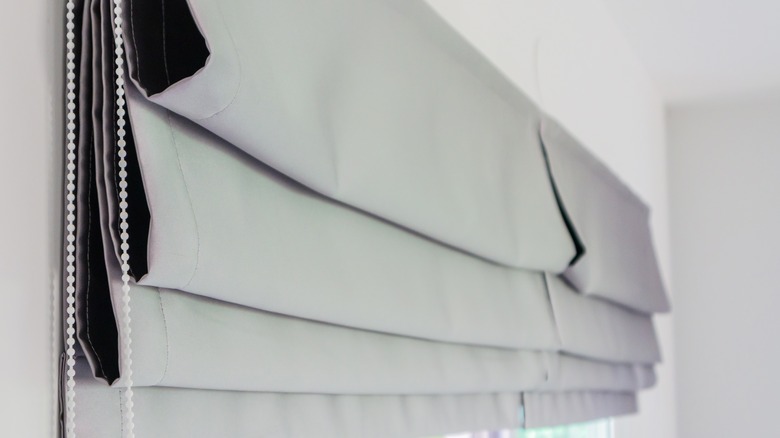The Design Hack That Makes Roman Blinds Look So Much Better
Roman blinds have been around for thousands of years. With a history dating back to Rome in 70-80 AD, they've proven their longevity in the design world as more than a passing trend. But, as with many timeless features, Roman blinds have become such a mainstay as home window treatments because their simple, classic appearance can blend into a space without doing much to elevate the overall design, particularly if you have a relatively plain curtain design. For those who love the warm and luxurious look that these blinds provide but are looking for wonderful window treatments to brighten up the home instead of one that fades into the background, you might want to consider a combo — pairing blackout blinds with Roman blinds for an elegant, layered look.
Since Roman blinds either block light when down or let light in when raised, they are typically limited in controlling the light filtration. The same goes for blackout blinds, which either let in all the light or none at all. Pairing Roman blinds with blackout blinds is perfect for the best of both worlds. It gives you the classic, textural look of Roman blinds alongside the light and heat filtration capabilities of blackout curtains so you can sleep in peace, keep your home cooler, and easily switch between a light and airy or dark and moody ambiance.
Hide blackouts behind Roman blinds
Roman blinds are often made of a light fabric like linen or thin cotton, which can't completely obstruct the light. And, with blackout blinds that come in pitch black for greater UV and heat filtration, it's no secret that homeowners struggle to find attractive options that match their home decor. By hiding blackouts behind Roman blinds, you don't have to worry about having to choose between too much light seeping through the fabric and your room feeling dark and dreary.
Swedish home designer and content creator @danish_homedeco shared her approval for this technique on Instagram in a curtain design tip video where she hid black blackout blinds behind thin white Roman blinds, adding that she was looking forward to changing the colors seasonally. Thankfully, with practical blackouts as a base, you can switch Roman blinds seasonally with ease, all without the worry of whether your selected fabric will let too much unwanted light in.
If you don't love the blackout and Roman blinds combo, another way to layer window treatments is to pair Roman blinds with your curtains. This way, you can still adjust the amount of light coming through the window, but the window dressings are more suited to your style preferences. Roman blinds have stood the test of time, so however you pair them, you can rest assured that they are an investment that won't be going out of style.
